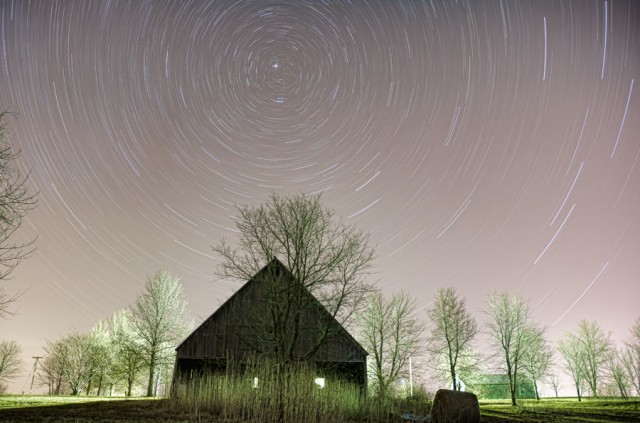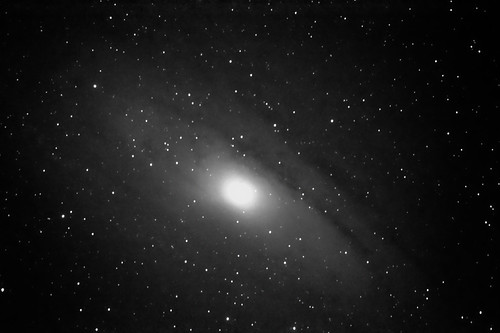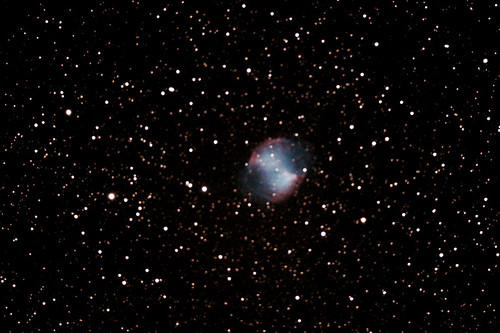So I’ve been meaning to try something new for a while now and I just got it worked out (sorta) this past week. I’ve always enjoyed photographing the night sky, but I really wanted to work on taking images that showed the sky in motion. It’s so easy to go outside, glance up at the sky, and think of it as static and unchanging, but if you look carefully enough, you’ll see that it’s in constant motion. I did a lot of work last year imaging the sky in a static way, either by shooting through a telescope with a clock drive, or by stacking a succession of individual images. While I really enjoyed some of the images that I captured through those methods, they didn’t really portray how rapidly things move around in our night sky.
In thinking of ways to demonstrate this motion, the first obvious choice was to do a typical “star trails” image. I’ve attempted these type of images before, but this past week, I tried to up my game a bit. My trails images before were only about 10 to 15 minutes in length, but the one I took last Thursday was approximately an hour-long exposure. The resulting image turned out pretty good, all things considered. I have a dusk-to-dawn light (that I need to put on a switch!) that’s great for security, but not so great for viewing the night sky. To combat its effects, I set my camera up on its tripod on the far side of my barn so that the barn blocked most of the light. The trees and surrounding ground, as you can see in the image, were still fully illuminated. My light and others around the area also light up the sky, so rather than a deep, dark background sky, I got a kinda pink-ish background. The star trails themselves, came out great.
Here’s the EXIF data for the image.
| Camera | Nikon D7000 |
| Exposure | 3099 |
| Aperture | f/5.0 |
| Focal Length | 18 mm |
| ISO Speed | 200 |
| Exposure Bias | 0 EV |
Even if you don’t have a tripod, you can still try this type of shot for yourself. You will need something to keep the camera steady. A beanbag or a bag of rice will work just fine. You will also need a remote shutter release. Find either a bright star or planet and manually focus on it, then set your camera to manual mode and set the shutter speed to “bulb”, and your aperture to your lens’ sweet spot. For the lens I was using, that happens to be about f/5.0. Even though it’s night, don’t use a high ISO. The length of the exposure will gather all the light you need. Once it’s ready, lock the shutter button down and go back inside where it’s warm and wait. 🙂
Practice, practice, practice, and share your star trails pics, tips, and suggestions in the comments section below.



